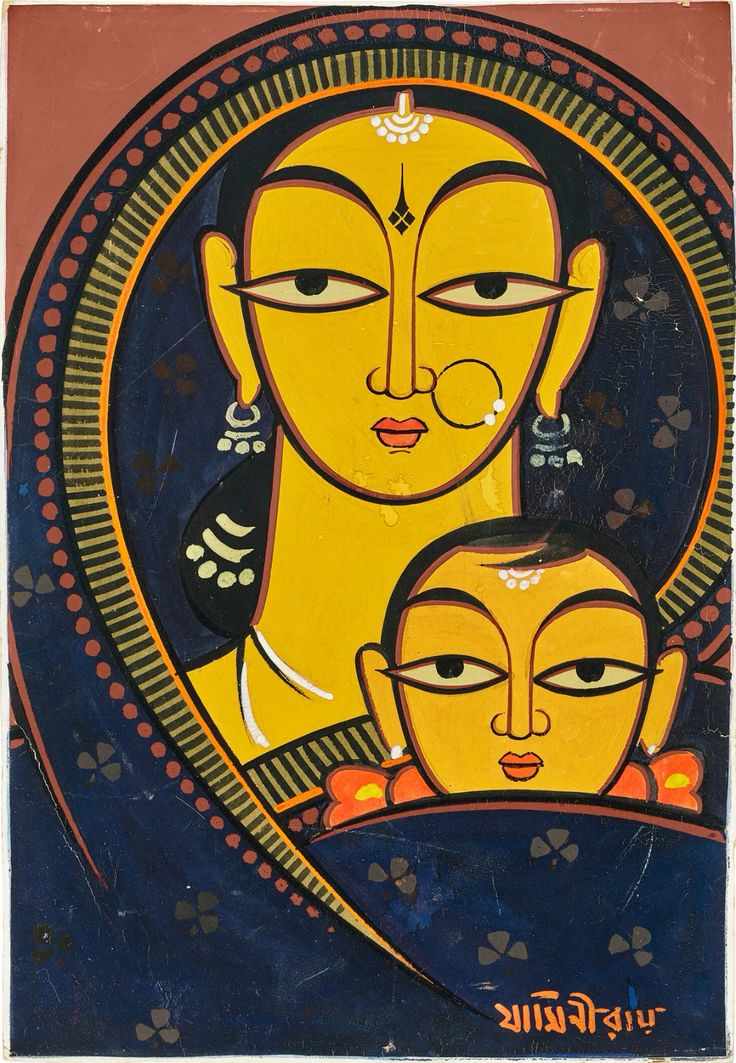
Do you believe that seeing a good image brings lots of good luck?! – YES!
Gond Art – one such Living Tradition of Gond Tribes from Madhya Pradesh- does so.
Gond Painting is a well-known (actually less known) folk art of the Gond tribal community of India. These tribals live in Madhya Pradesh, Bihar, Maharashtra, Odisha, Telangana and Andhra Pradesh. The word Gond comes from ‘Kond’ meaning green mountains and the tribal people are called Gondis. Before the art got recognition as Gond, it was called generally as “Vividh Kala” done by Pradhans or Pardhans - the storytellers and musicians.
These traditional paintings were done on walls & the ground by using natural materials like lamp soot, cow dung, limestone, mud colours, charcoal, fruits and their seeds.
Gond paintings were narratives of folk stories, beliefs in God & Goddesses, animals, and symbols that say important things which are made of bold colours consisting of patterns repetitively done.
In Gond art, we can observe animals transforming into plants & plants into animals,& a few stories that Pradhans used to convey through this art.
In paintings, we get to see a lot of animals such as fish, peacocks, birds, elephants, lizards, monkeys, deer, tigers and leopards. Rarely, we get to see people. A tree is vastly seen in every painting here called the Mahua tree considered 'The Tree of Life'-A a sacred tree for the tribe. Gond people keep gods or goddesses under the trees to bow down before. They also worship other trees such as
Saja Tree: Worshipped by the Bada Dev and by the Gondis.
Pakri Tree: A blessed tree which cures many diseases and illnesses. The Gondis eat a dish made out of Pakri leaves.
Ganja Mahua Tree - which tells a tale about caste-differentiated Chamar (represented as the Ganja tree) and Brahman (as the Mahua tree) love story, where they were denied by the society. To sacrifice for a greater end they disappear into the forest and take spiritual rebirth as Ganja Mahua Tree.
Peepal Tree: Believed to be where the Devtas reside.
Gonds believe that everything that exists has spirits, not only humans but also animals, trees, mountains, and nature. They celebrate everything. Painting Gond art on walls brings them good fortune and wards off evil. As said they presumed seeing good images begets good luck, positivity and blessed. Their paintings depicted fear, dogma, aspirations, dreams, and lucrative imaginations rather than being religious.
There are 2 types of Gond paintings- Digna & Bhittichitra.
Digna is done on the walls & the floors.
Bhittichitra is done only on walls - The main subjects of these paintings are birds, animals, plants, and trees with highly contrasting colours & a variety of patterns.
Some of the patterns used in Gond paintings are:
Dots - Fine Lines - Stars - Curved Lines – Dashes - Leaves Shape - Fish Scales - Drops of Water - Seed Shapes - Geometrical Shapes, etc.
These patterns are unique to each artist as he/she uses his/ her distinctive pattern and style to fill the images using natural colours that were taken from the soils called Pili Mitti (Ramraj Soil), Chuii Mitti, and Geru Mitti. Flora and Faura derivatives from Palash Flower, Pomogranite fruit, Orange skin, Harad and so on.
We can observe that there is no border here as the imagination has no boundaries and that’s what makes this art interesting and unique.
Gond is very similar to Aboriginal art from Aborigine tribes hailing from Australia.
Fun Fact: Did you know there were just two Supercontinents named Gondwana and Laurasia? India and Australia came from the Gondwana continent, so get to see similar rituals, art patterns, dances and manner of living. The Gond community came under the Gondwana Kingdom / Dynasty, claiming to be descendants of Ravana and he was an ancient Gond king. They have temples for him, his wife Mandodari, and their son Meghnad to celebrate and idolize them.
The acclaimed Gond Artist - JANGARH SINGH SHYAM (1962-2001).
Jangarh Singh Shyam was the Pradhan who is acclaimed as a great GOND ARTIST. He was exceptional in his creativity. In the 1980s, a group of researchers in search of indigenous art were sent by J. Swaminathan (Founder, of Bharat Bhavan Art Centre in Bhopal, Central India) and they met a young Pradhan Gond, Jangarh Singh Shyam. J. Swaminathan was astonished by the rare talent of Jangarh and persuaded him to study painting. Jangarh moved from his village Mandla (MP) to Bhopal and was the first person to paint Gond art on paper and canvas. Jangarh’s unique work earned him fame.
Later Jangarh started an atelier school called “Jangarh Kalam” to teach/practice art for his people from the village. This gave rise to the popularity of the Gond art. Unfortunately, Jangarh left the world at the age of 39 in Japan; but his students are now flourishing as Gond artists worldwide.
A few notable Gond artists are – Bhajju Shyam, Venkat Raman Singh Shyam, Mayank Shyam, Japani Shyam, Nankusia Shyam, Dilip Shyam, Durga Bai, Tamshiram Paraste, Kamli Kushram, Bharti Shyam and many more who are contributing art to their community and worldwide
Gond Art today is not just folk art but very contemporary, modern, pop feel that can be used in Paintings, on walls, Sarees, Kurtis, Dupattas, Stoles, Handbags, Trays, and Coasters, giving free reign to your imagination!









Write a comment ...